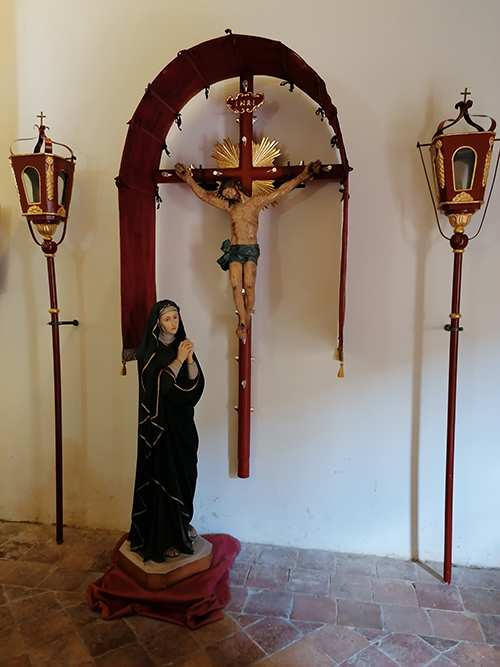Our Lady of Sorrows
The Virgin is a clothed Madonna, a typical example of statuesque full of expressiveness concentrated in the face and gaze, which are further enhanced by the fact that she is wearing real clothes. Donated to the Confraternities in 1856, it replaced the previous icon. It is placed on a base carved in wood and painted in marble. On the front, there are two angels in gilded wood holding a spear and reed with sponge and two carved wooden candelabra. Our Lady of Sorrows lies on a cross with arms ending with the faces of cherubs.
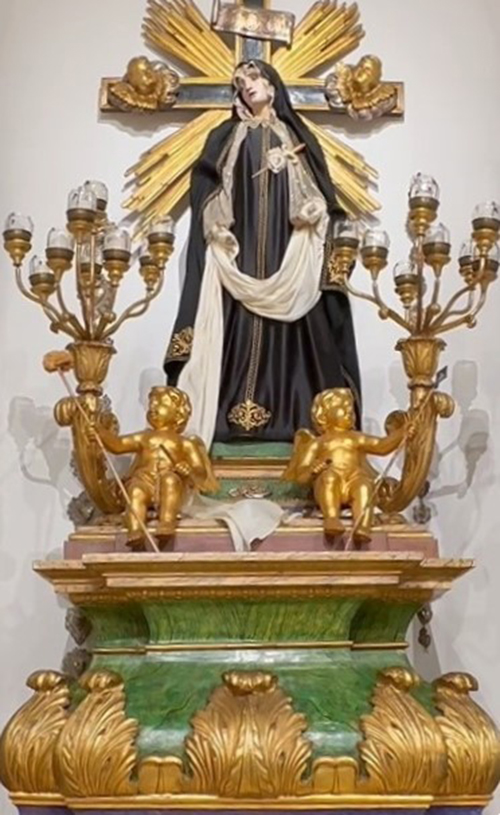
The coffin
The coffin is the most interesting object, it expresses all the elegance of the Baroque style; the classical influence gives it ornamental significance, an element that does not harm the effect of the whole. Dating back to 1722, the coffin is made of beech wood gilded with gold leaf made by local craftsmen. The numerous decorations are modelled around the lying body of Christ. It replaced the previous support that had got lost.
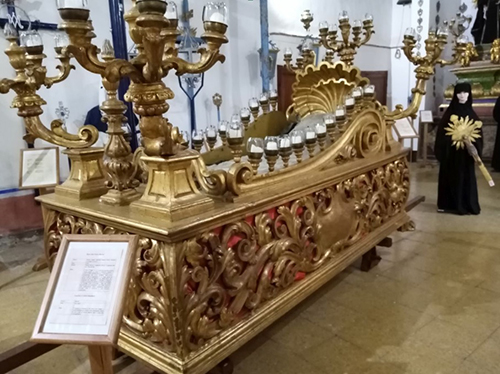
St. Peter’s Keys
The crossed keys of the 19th century were made by local craftsmen. They are decorated in gold and silver with two Latin inscriptions on them: “Quia tu es Petrus” (“Since you are Peter”) and “Tibi dabo claves regni” (“I’ll give you the Keys of the Kingdom”)
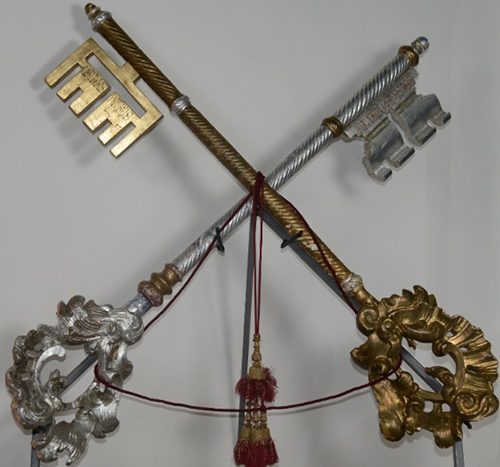
The Crucifix
The 15th-century wooden crucifix is a work that has been attributed to the southern Umbrian school as part of Bernardino Campilio da Spoleto. The figure is well modelled and expresses an enhanced realism, tensed in its effort to endure pain. It is made of olive wood.
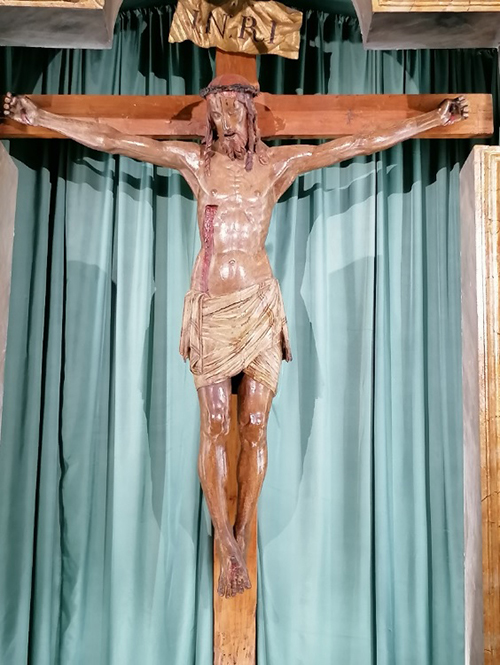
The “Fusciacco”
Fusciacco is a fine velvet drape with golden embroidery and fabric appliques. In the centre, it features the emblem of the confraternity of Santa Croce, that has now been adopted as the official logo of the Confraternities of Orte. On the inside, there are floral and plant decorations of various colours.
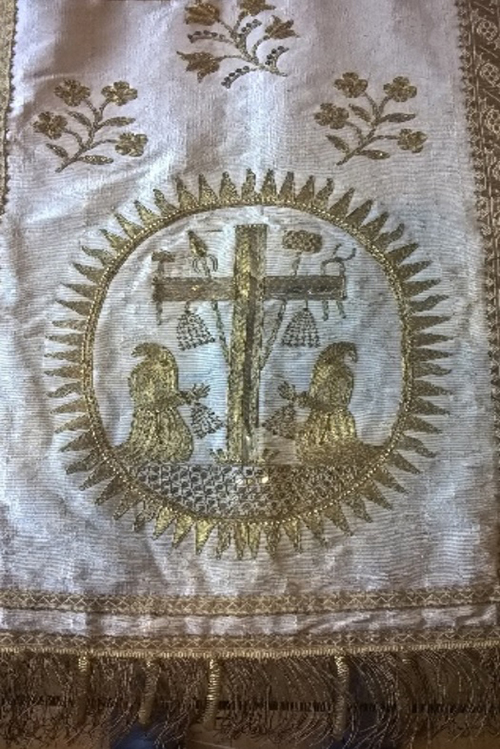
Furnishings of the Confraternity of Mercy
All the objects are from the 18th century and are black in colour. The cross, the processional cross, and the lampposts are made by local craftsmen. The processional cross is decorated with some symbols of the Passion such as the hand that recalls the throwing of the dice and the cloth hanging from the gallows, a sign of Christ’s garments. The decorations portray plant elements with two angels on both sides of a reliquary that is now empty.

Furnishings of the Confraternity of the Holy Cross
The cross, 4.05 meters high, dates back to the end of the 17th century. It is enriched with plant elements and with an animal-shaped decoration which is particularly valuable for its symbolic nature: a snake impaled on the cross. The lampposts and the processional cross, from the 18th century and of local craftsmanship, have simple decorative patterns. At the top of the canes, on the decorations, the Piety is portrayed.
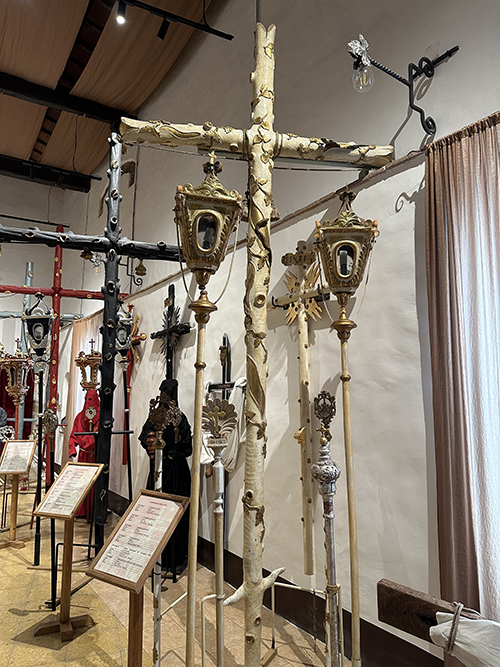
Furnishings of the Confraternity of the Most Holy Trinity
Red in colour, its two 18th-century lampposts are the most valuable objects; the cross dates back to the end of the 19th century while the processional cross has been rebuilt according to its original design of the 17th century. The decorations portray plant elements with two angels on both sides of a reliquary that is now empty.
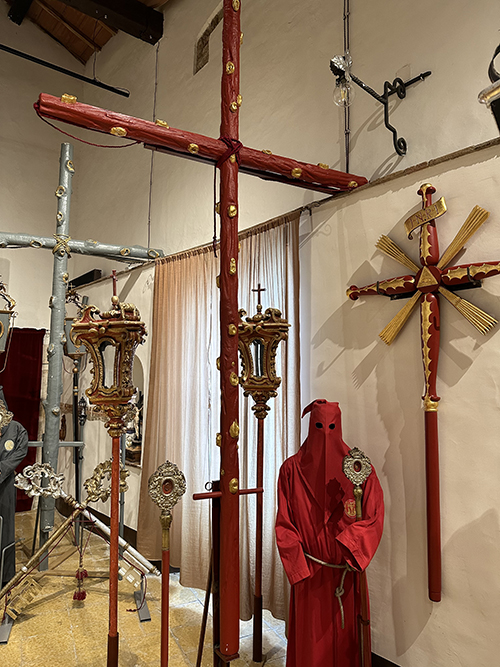
Panel “Lady of the Rosary”
Commissioned by the Confraternity of the Lady of the Rosary to the painter ” Master craftsman Giorgio da Orte”, the panel was painted in the first half of the 16th century. The Virgin, holding her child in her arms, is crowned by angels and surrounded by saints and people of that time.
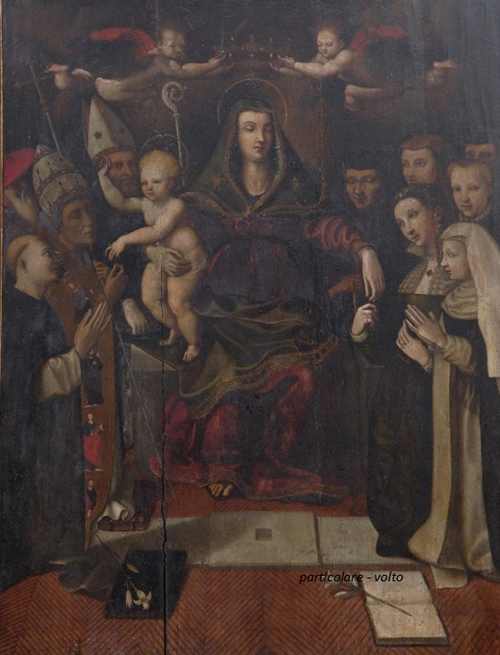
Site of San Francesco
In addition to various vestments and altar furnishings, the section of the Scattered Museum located in San Francesco exhibits different objects such as small ancient ballot boxes, medallions, stamps and more. But above all, the Transport of the Dead by the Confraternity of Mercy is reconstructed. The deceased is surrounded by the priest of the confraternity and three brothers.
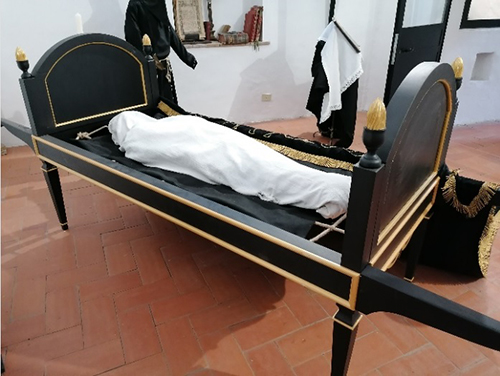
San Biagio Headquarters
In the Church of San Biagio a simulation of the hospital care carried out by the Confraternity is exhibited. The crucifix of the 18th century, particularly valuable, is enriched with ornamental silver nails. At the bottom, there is the figure of Our Lady of Sorrows. The two lampposts date back to the 19th century.
